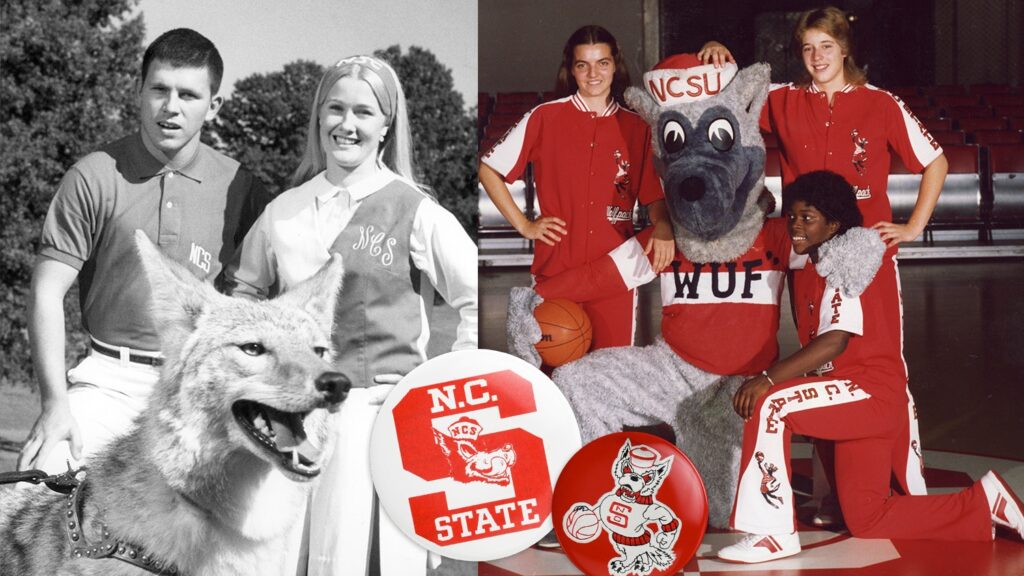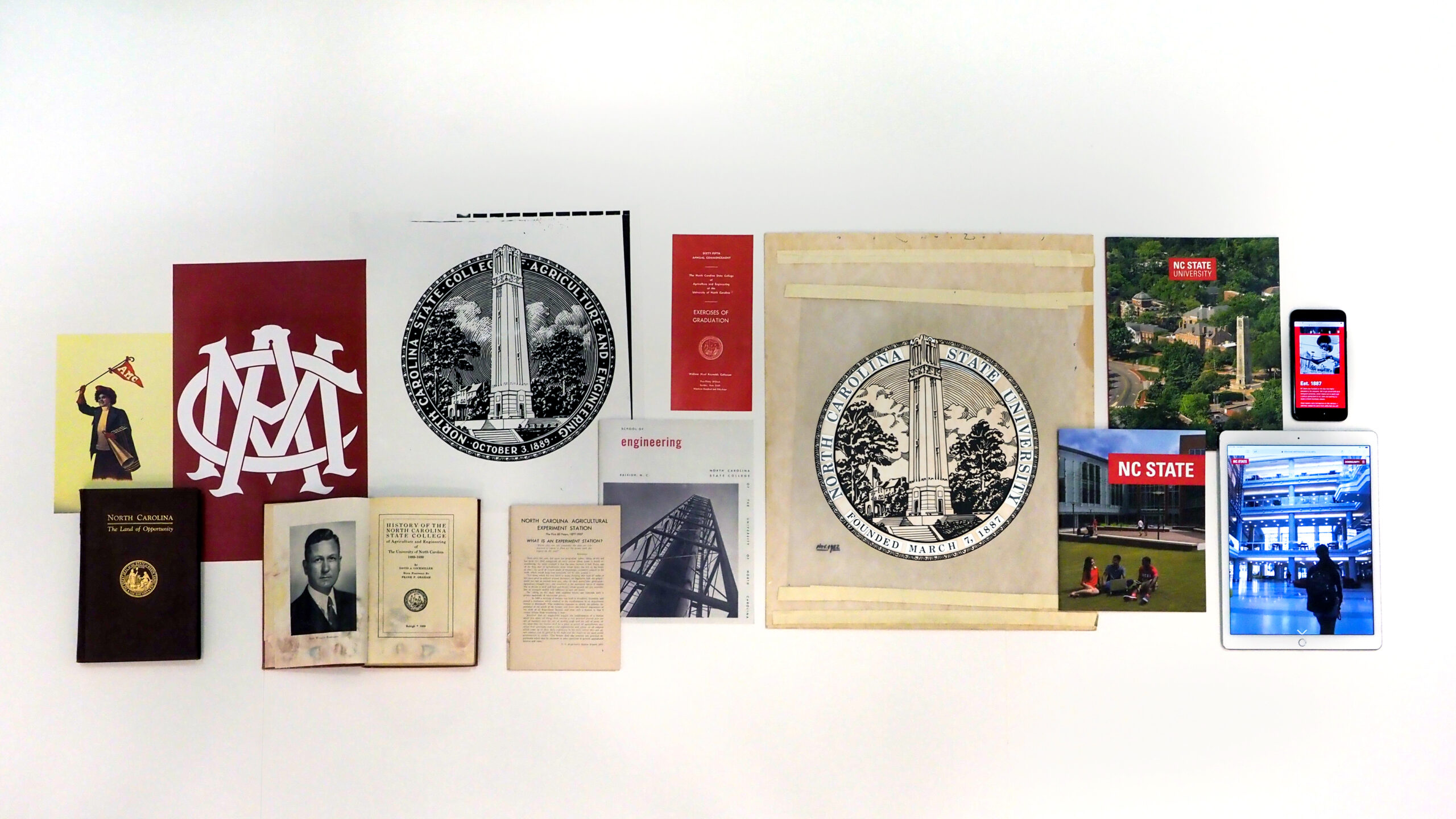
Brand History
Our brand is built on a core truth about NC State: Even our past was forward-thinking.
Our Midcentury Roots
The Morrill Acts of 1862 and 1890 established a system of land-grant colleges across the United States. This was a new kind of thinking: expand access to higher education and prepare the nation for an industrialized future.
As a result of this legislation, NC State University was founded in 1887 as the North Carolina College of Agriculture and Mechanic Arts.
Established in Raleigh as the state’s land-grant institution, NC State’s mission was to focus on “agriculture and the mechanic arts.” These were considered vital to the economic development of North Carolina and aligned with the land-grant ideal of providing practical education to the working and middle classes.
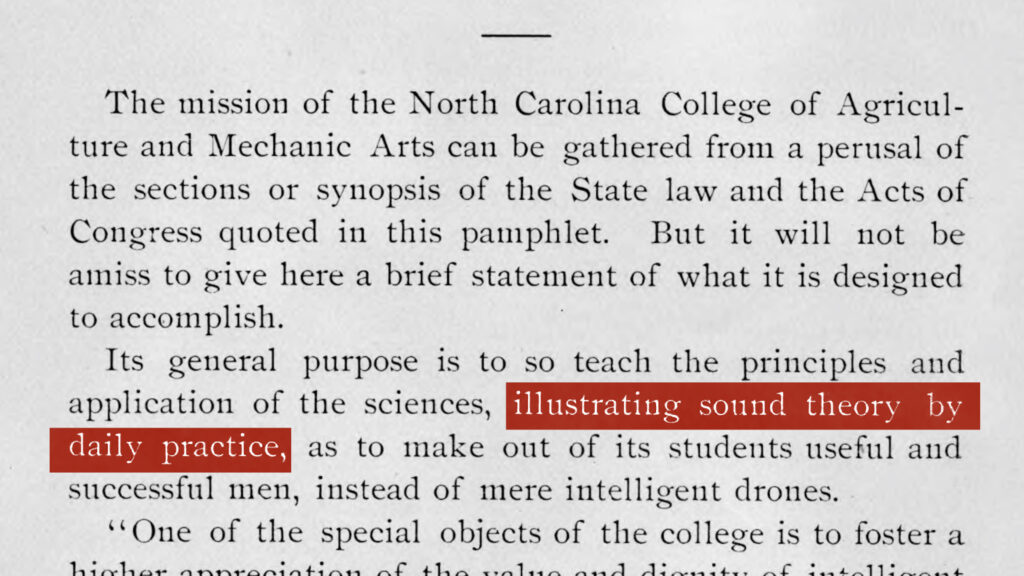

In the early decades of the 20th century — through World War I, the Great Depression and the New Deal — NC State experienced significant growth and transformation, both academically and physically, as it matured from a small technical college into a more comprehensive institution.
By 1940, the university had established itself as a vital educational force in North Carolina, contributing to both the statewide economy and the national effort as World War II loomed.
World War II was a transformative time for NC State, as the university supported military readiness, scientific advancement and social stewardship. Women were admitted in more significant numbers to help fill the gap left by men serving in the war. The Wolfpack experienced a massive post-war enrollment boom, thanks largely to the GI Bill, which provided educational benefits to returning veterans.
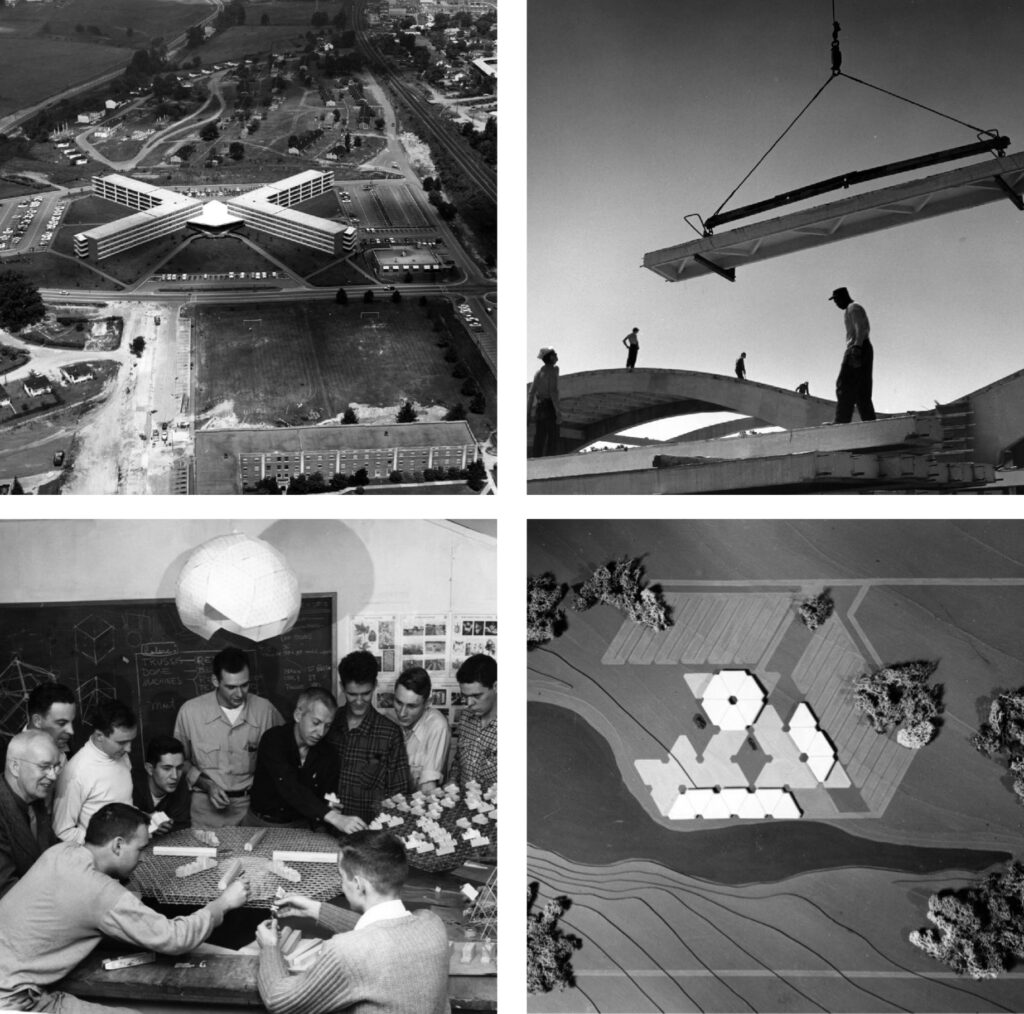
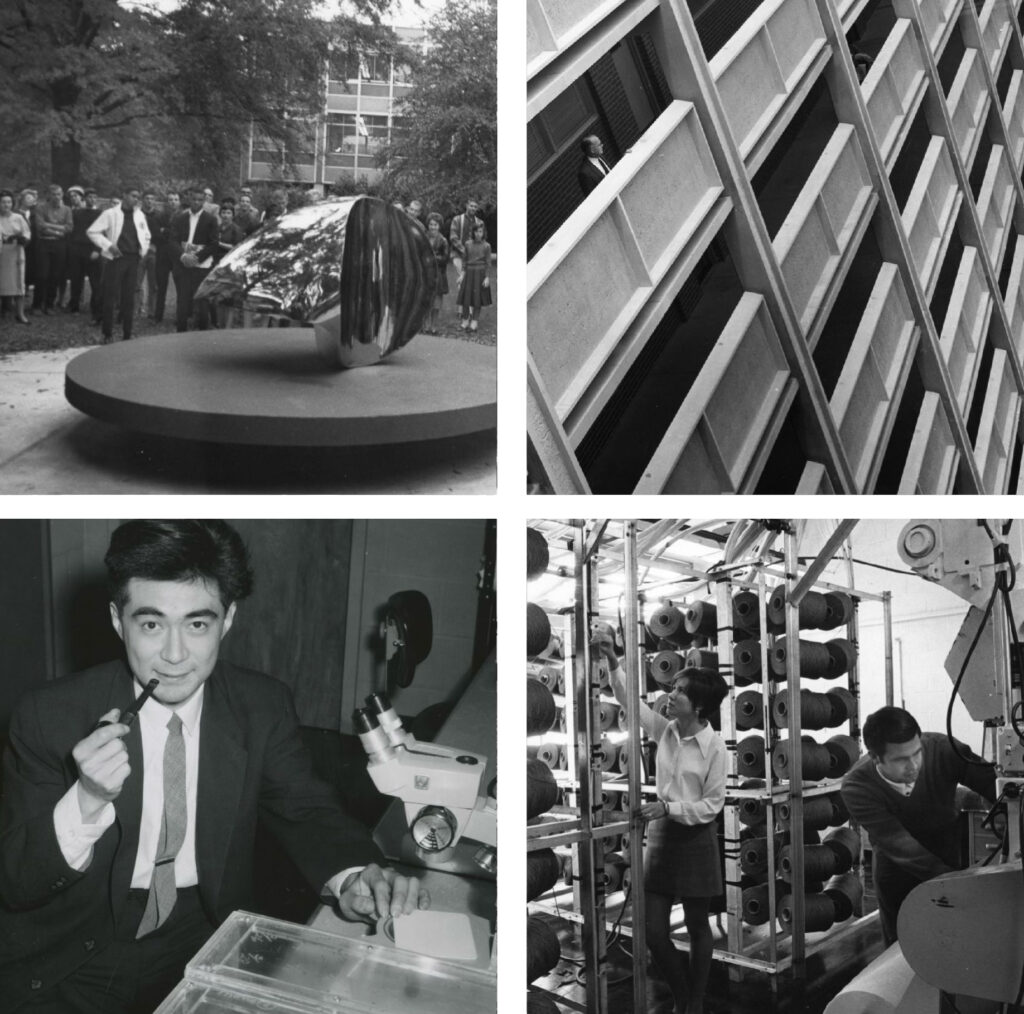
After the war, during the midcentury modern era of 1945 to 1970, NC State took its place as the flagship STEM university in North Carolina. It grew into a comprehensive research university while staying true to its land-grant roots.
The New South and the Modernist Movement
The New South was a vision for modernization — economic, cultural and social — in the aftermath of World War II. It emphasized industrial growth, urbanization and shedding the old agrarian, segregationist image of the South.
At NC State, this manifested in several ways:
- Rapid enrollment growth, driven by returning veterans benefiting from the GI Bill
- Expansion into new fields of science, technology, design, business and liberal arts, aligning with the New South’s call for a diversified economy
- A shifting identity — from a primarily agricultural and mechanical college to a major research university with global reach
- Greater integration and eventual racial desegregation in the 1950s and ’60s
“That’s what NC State does. It opens wide the greatest door of your lifetime, if you’ll just seize it, get in there and do what is there to do, and most of it’s free.”
William C. Friday
Textile Engineering ’41
First president of the UNC System
Some of the key contributions NC State made to the New South were in architecture and design, beginning with the founding of the School of Design (now the College of Design) in 1948.
The school’s first dean, Henry L. Kamphoefner, recruited an elite group of forward-thinking architects and designers, many influenced by Bauhaus ideals and European modernism. Kamphoefner believed in the power of design to reshape Southern culture — and he did it through education and built form.
The School of Design helped bring midcentury modernism to the South, both stylistically and ideologically. Faculty and alumni designed homes, public buildings and even churches that reflected clean lines, open plans, integration with nature and a rejection of ornate historical revivalism.
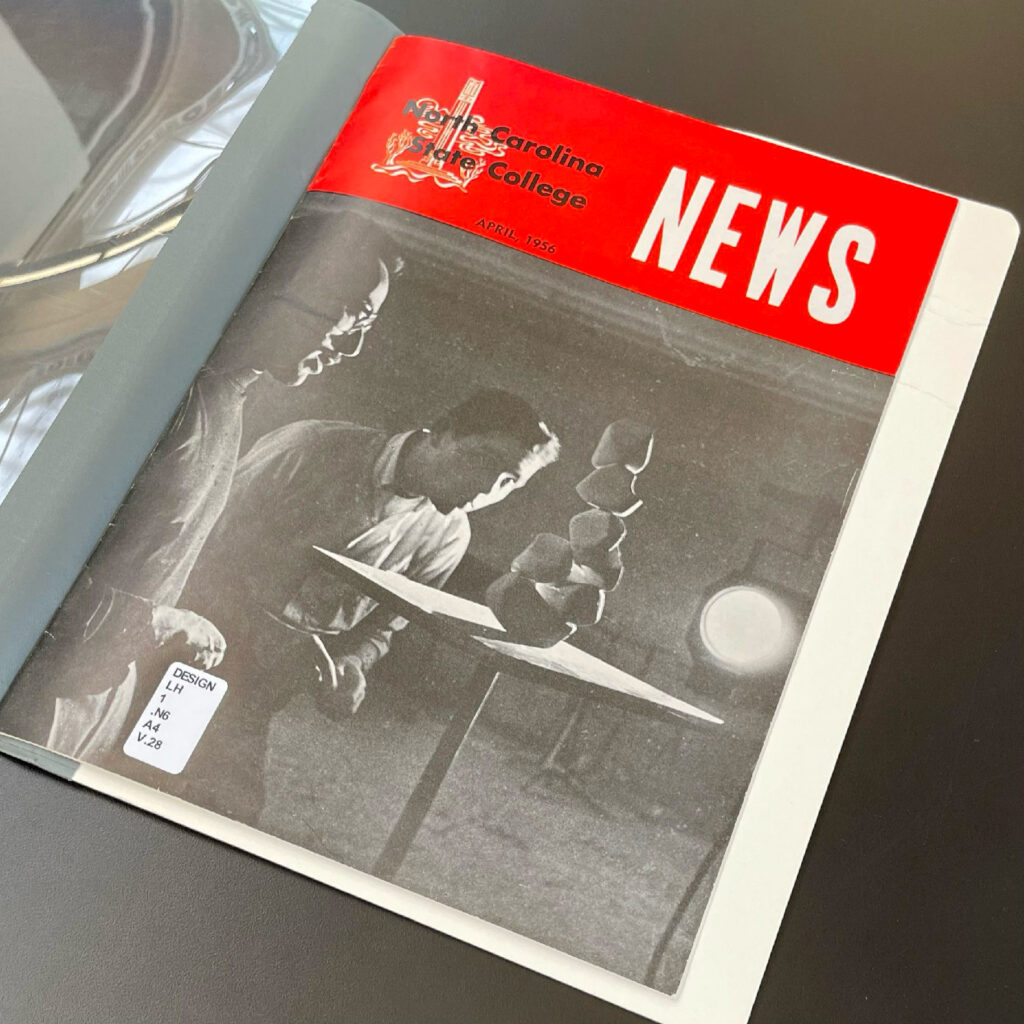

NC State’s postwar influence on Raleigh and the surrounding region was profound. The university served as both a creative engine and a cultural disruptor, helping shift Raleigh from a traditional Southern capital into a more progressive, modern city that could better serve the state.
Brick by Brick
From the Earth
Between 1945 and 1970, the move toward modernism also had a significant impact on the College of Agriculture and Life Sciences. This period was marked by a strong push toward scientific advancement, efficiency and technological invention, which reshaped agricultural education, research and extension across North Carolina and the United States.
By promoting science, technology and specialization, the college expanded research in mechanization, chemicals and biology. It modernized its facilities and teaching methods, and shifted toward industrial, global and research-driven approaches to agriculture — proof of land-grants’ evolving role as research powerhouses that meet the needs of both traditional and emerging industry.


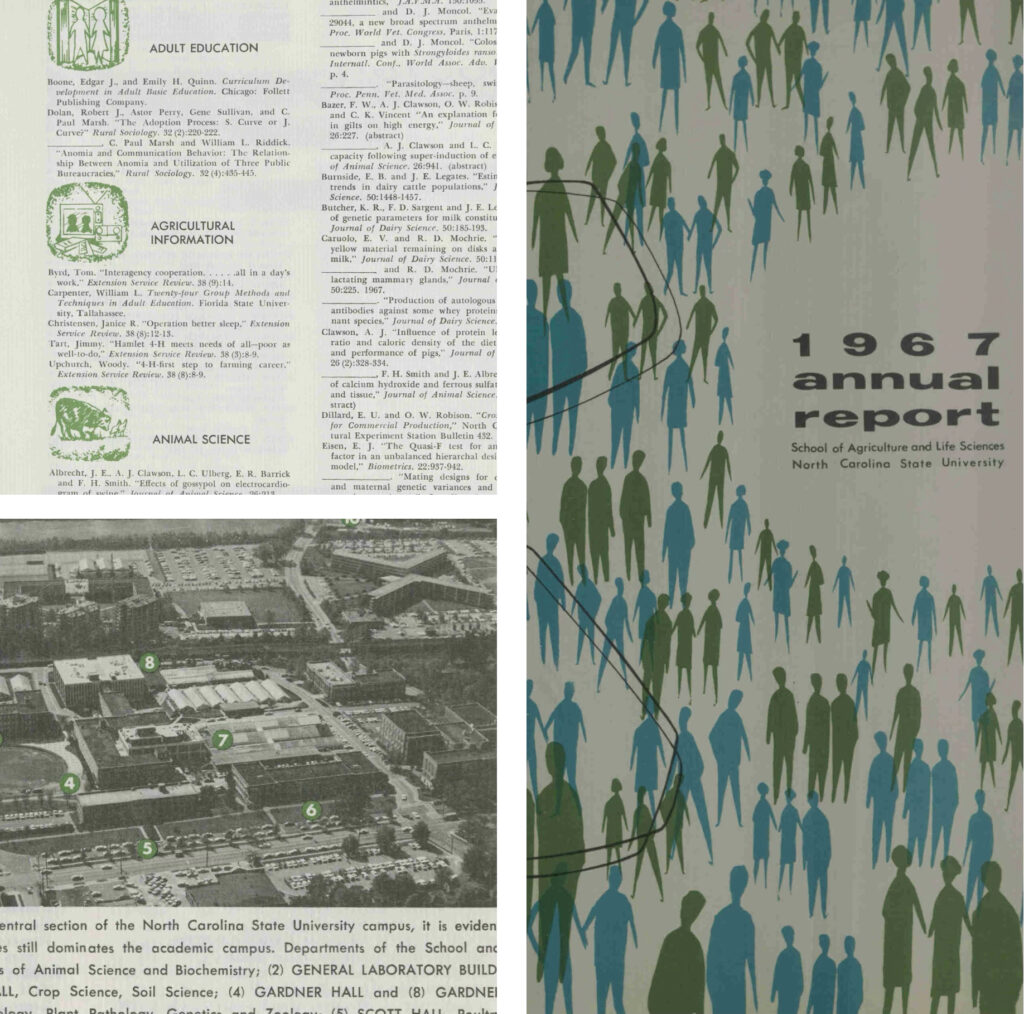

To the Stars
Modernism also had a profound effect on NC State’s College of Engineering, driving partnership, scientific precision and large-scale technological advancement. Amid Cold War pressures, the college expanded rapidly, aligning itself with national priorities in defense, energy and infrastructure.
A key milestone was the construction of the nation’s first university-based nuclear reactor in 1953, which established NC State as a leader in nuclear engineering and symbolized modernism’s faith in science and progress. The college expanded research, modernized facilities and aligned closely with industry and government, reflecting a broader shift toward interdisciplinary, research-driven engineering education.
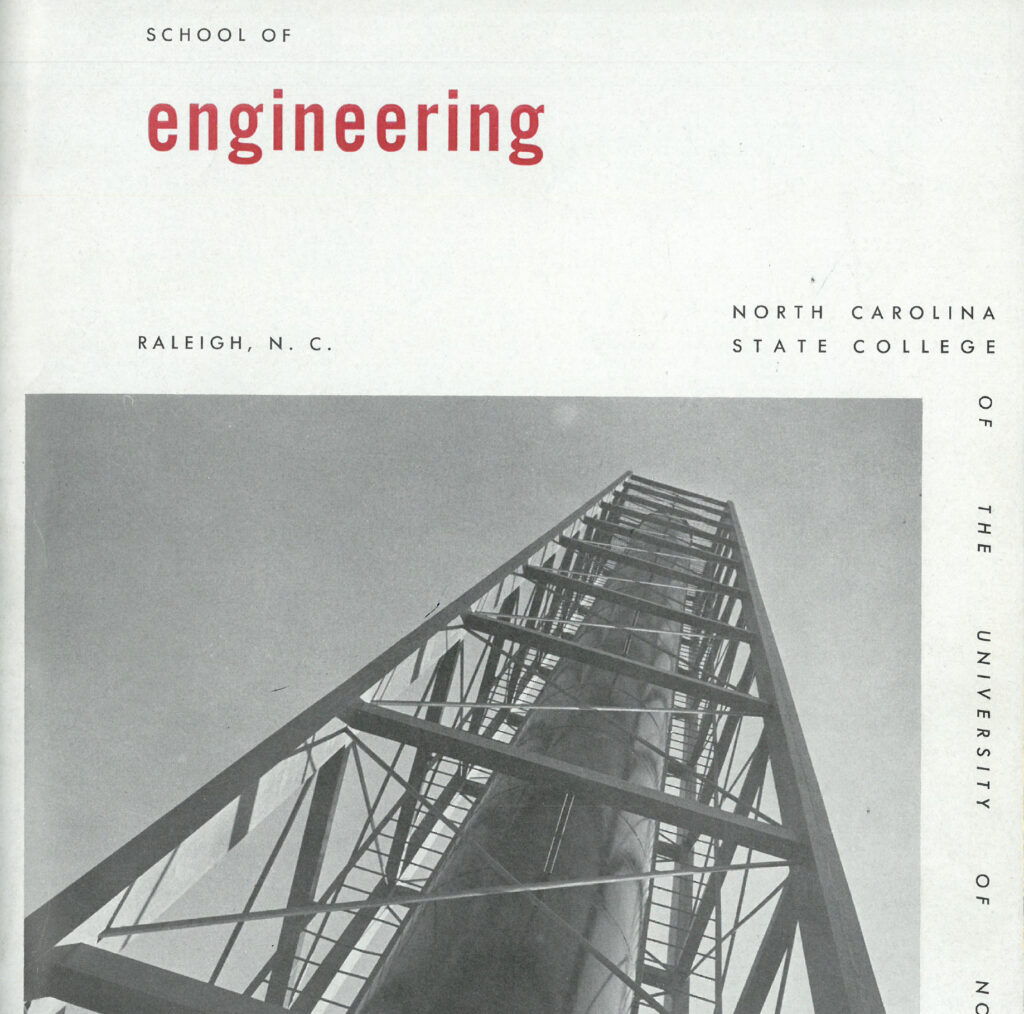
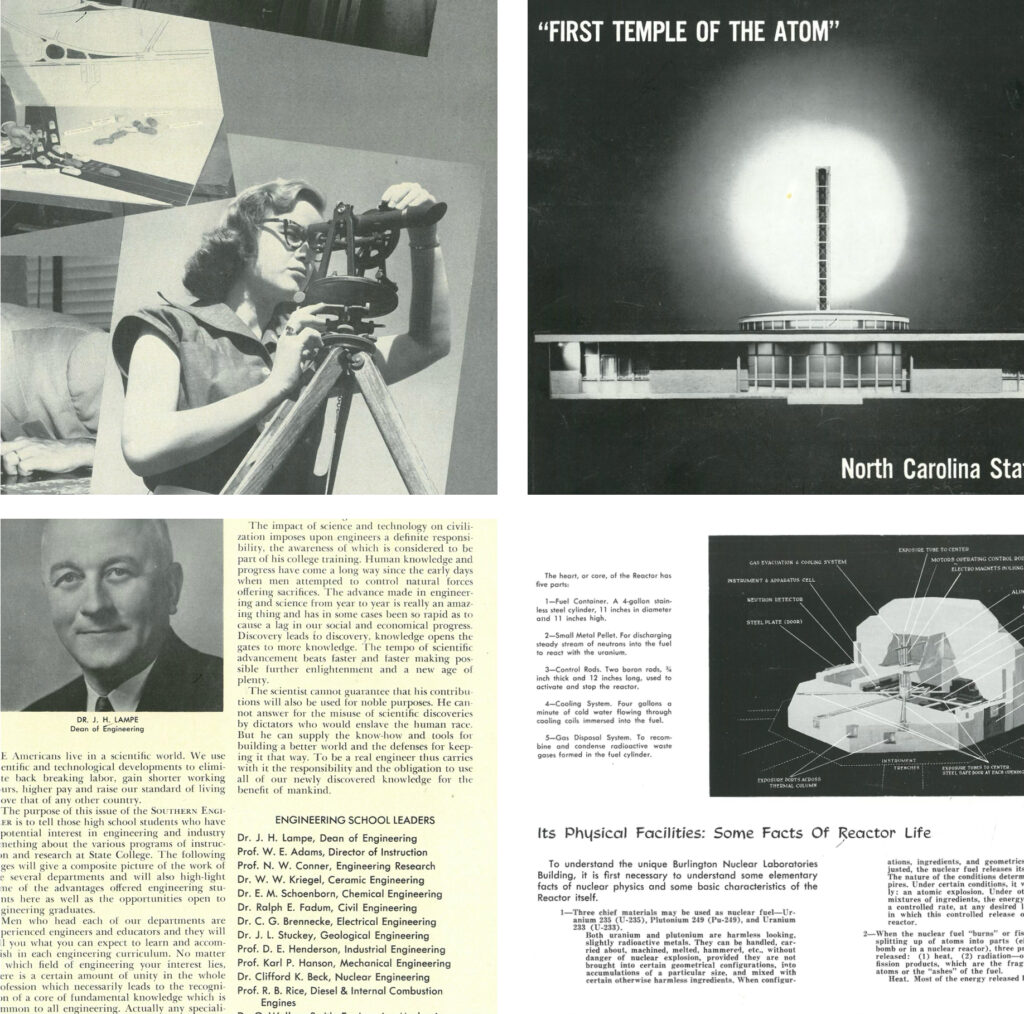
We Design the Future Together
Meanwhile, the School of Design was deeply engaged with the local community, offering critiques, consultations and lectures that were open to the public.
This democratization of design thinking helped raise the cultural awareness and aspirations of both NC State and Raleigh, creating a more meaningful — and enduring — relationship between the university and its community.
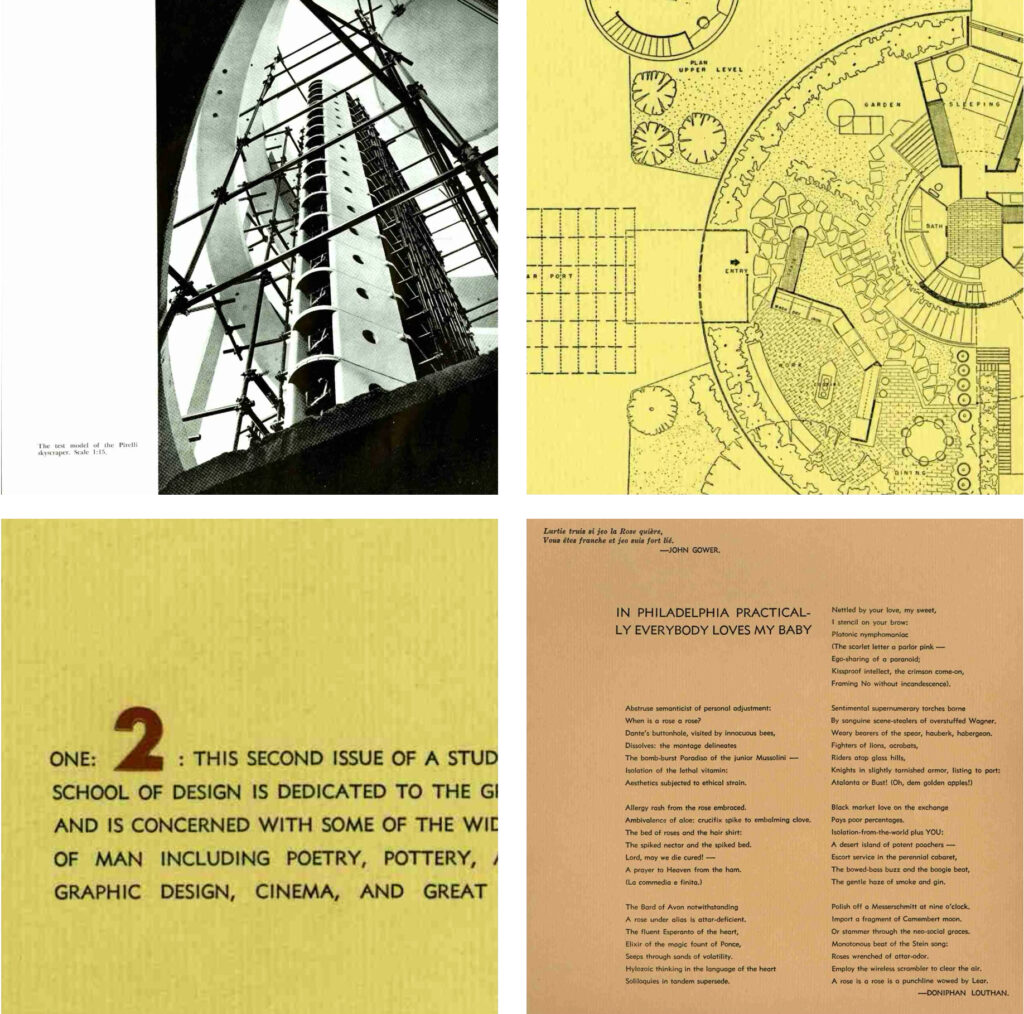
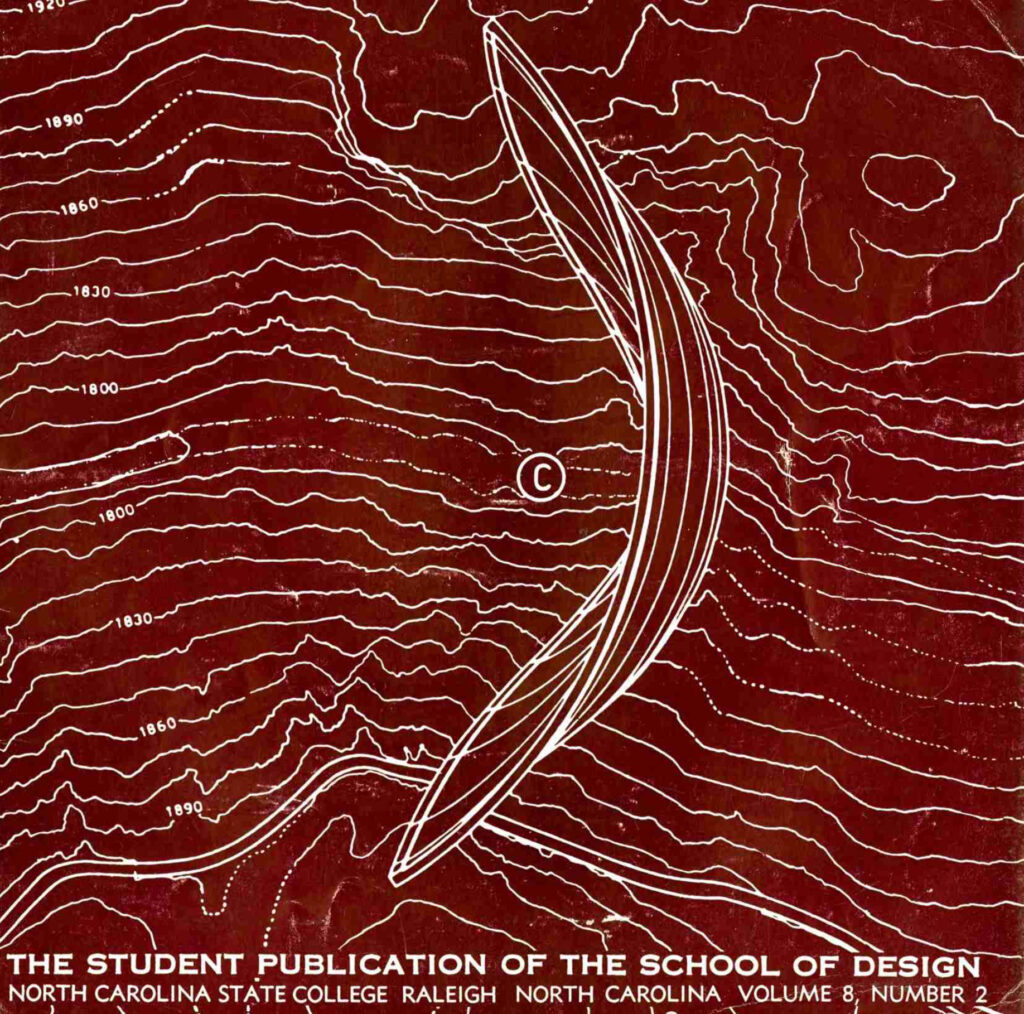
NC State also served as a cultural bridge, introducing North Carolina to global design trends and helping shape the region’s built environment in line with modernist principles. It produced graduates who went on to influence architecture, industrial design and urban planning nationwide.
Our Place
The physical campus of NC State was also reshaped by modernist planning ideals during this time.
NC State’s art deco and art moderne construction began to integrate midcentury, brutalist and international styles. Older neoclassical and colonial revival buildings were supplemented with new structures that emphasized function over ornament. Steel, glass and concrete became more frequently integrated into the built environment. Campus planning focused on order, efficiency and accessibility, reflecting the new rationalist spirit.
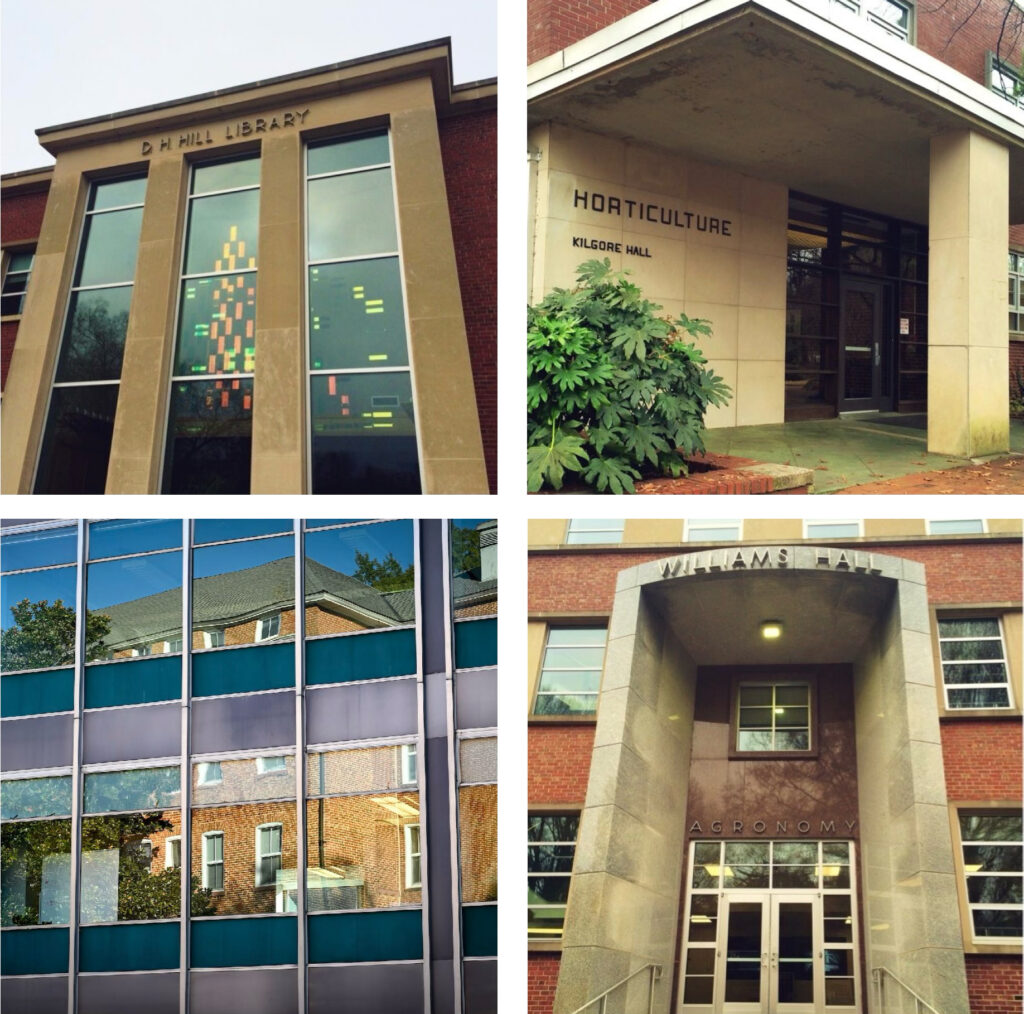

NC State’s campus continued to celebrate this modernist spirit as it grew and evolved over time. This is still evident today in the university’s flat roofs, open floor plans, floor-to-ceiling windows, integration with nature and reliance on traditional, unadorned materials like wood, brick and steel.


Our People
NC State didn’t simply adapt to modernism; it drove its influence across North Carolina. Central to this transformation was NC State’s key role in the creation and development of Research Triangle Park (RTP), the arrival of major corporate players like IBM, and the modernization of regional infrastructure, such as the opening of Raleigh-Durham International Airport (RDU) in 1955.
Together, these developments formed a modernist ecosystem rooted in innovation, planning and economic progress — and NC State was a key intellectual and institutional driver of that vision. But none of this could have been accomplished without the investment of the state.
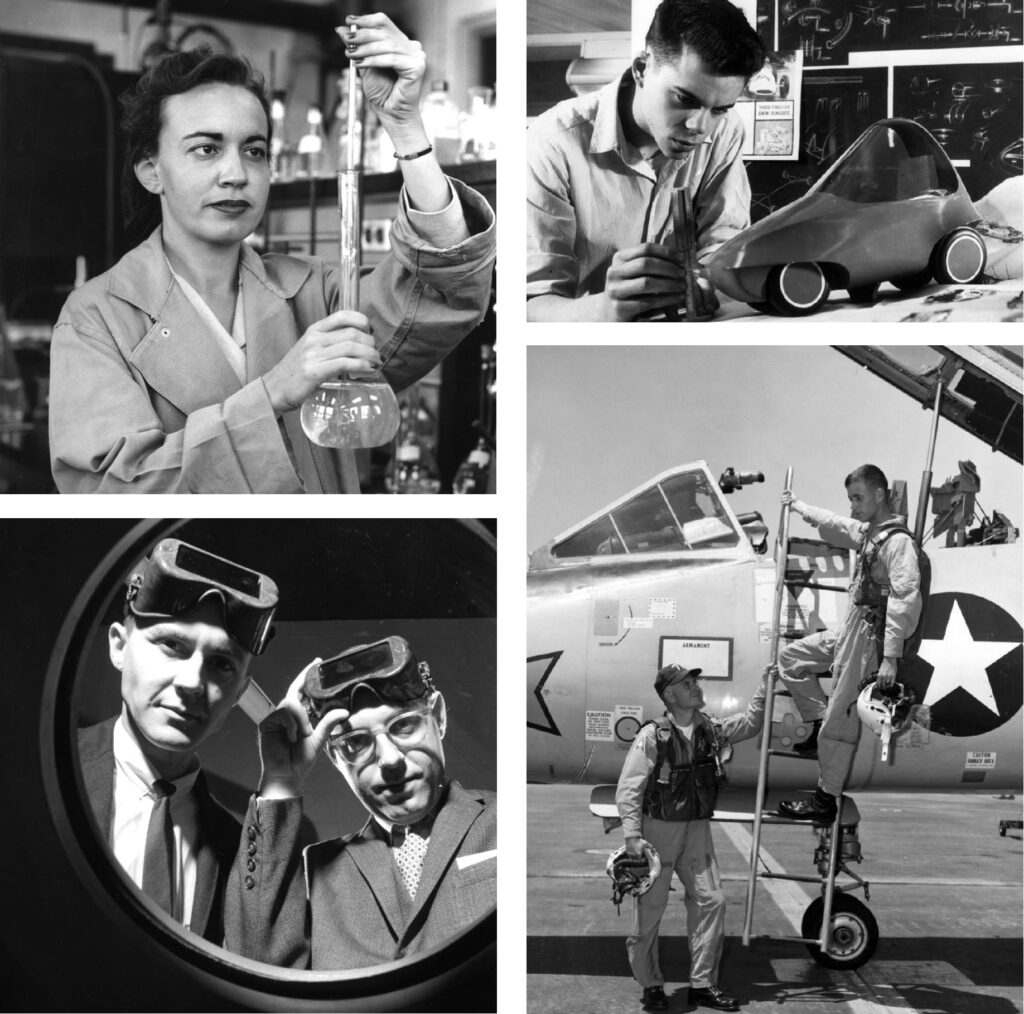

North Carolina’s people have always been core to NC State. The power of the Wolfpack is collective: The university empowers people to better direct, coordinate and scale their efforts. Across K-12 programs and lifelong education, student support and extension services, small businesses and large-scale partnerships, the Wolfpack unites to tackle society’s challenges.


NC State is made up of North Carolinians from all walks of life and every background. Over time, it has grown to include people from across the country and around the globe who share our pursuit of the new and better.
With the university as their launchpad, NC State’s people are empowered to act as catalysts of the university’s enduring land-grant mission. And the brand we curate today rests on their efforts — and the work of all who have gone before.
Why Is NC State Called the Wolfpack?
